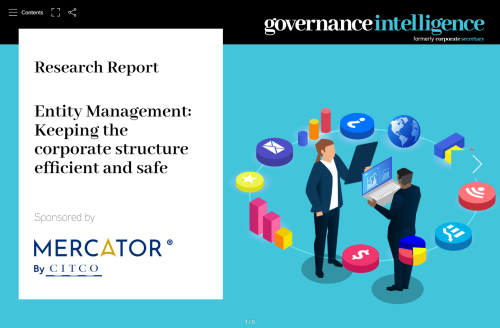This spring, US companies are for the first time reporting their CEOs’ pay relative to median worker pay. But despite months of companies’ preparatory work and years of complaints about the new requirement, early signs are that many institutional investors aren’t overly interested in the metric – at least, not yet.
The SEC’s CEO pay-ratio rule was introduced under the Dodd-Frank Act and applies to all US public companies reporting in the fiscal year 2017 onwards. Critics say it is intrusive, unnecessary and burdensome. Advocates say it will be a useful tool in curbing excessive executive compensation and shrinking the income-inequality gap.
So far, several companies have made headlines for revealing ratios ranging from the hundreds to more than 2,000. But at a recent event, one institutional investor dismissed the disclosure as ‘just math.’
Corporate Secretary has contacted more than 20 institutional investors about their approach to the ratio. All responses from these firms emphasize the importance of aligning CEO remuneration and shareholders’ long-term interests, placing the burden of responsibility on the board of directors. But in most cases the asset managers also point to investment theses they published before the CEO pay-ratio requirement came into effect. Only a couple of firms made specific reference to the new disclosure.
T Rowe Price will not consider the CEO pay ratio this year because there isn’t enough data to compare, but will reassess its position next year, a spokesperson says.
CalSTRS expects boards to have been aware of the CEO pay ratio before this year, a spokesperson says. Due to the complexity of executive compensation, CalSTRS wouldn’t vote against a company based solely on the CEO pay ratio. In a comment letter to the SEC last year, the pension fund encouraged issuers to provide additional information to explain the ratio, including the number of overseas employees, number of hourly employees and the ratio of CEO pay to the average employee.
This view is shared by many institutional investors, according to Rosemary Lally, editor at the Council of Institutional Investors. ‘Many investors are disappointed with the way that the ratio is being reported because it makes comparisons from one company to another extremely difficult. The final disclosure rules gave companies a great deal of latitude on presentation of the ratio,’ she tells Corporate Secretary .
Less than 10 percent of US companies so far have included additional information to contextualize their ratio, according to data from ISS Corporate Solutions.
The proxy advisory firms ISS and Glass Lewis are tracking the CEO pay-ratio disclosures but are not factoring them into their voting recommendations for 2018, according to Peter Kimball, executive director with ISS Corporate Solutions.
Although he agrees that most institutional investors do not seem interested in the ratio this year, he cautions against not taking it seriously. ‘When we talk about the investment community, it isn’t a monolith. Although most institutional investors, especially asset managers, have expressed little interest in the ratio, it would be misleading to say no one is interested. There will be labor union pension funds, for example, that will pay special attention to it and use that information at heavily unionized workforces,’ he says.
An attorney at a large-cap US company, who asked not to be named, tells Corporate Secretary that the firm’s preparations for the pay-ratio rule began by consulting outside counsel in 2014. A core team of four people from the legal, finance and HR departments convened in the second half of last year to run updated estimates of the ratio. This team worked on complying with the rule for the latter half of 2017 and the first quarter of 2018, again using outside counsel.
In addition, a larger team of 15-20 individuals – including representatives from senior management, labor relations, PR and communications and investor relations – worked on a communications strategy for employees, media, investors and customers.
‘Companies are spending more time on this than institutional investors, by and large,’ Kimball says. ‘This is why a lot of companies are taking a barebones approach because they’ve heard it’s immaterial in investors’ assessment of compensation programs.’
But he adds that this in-house collaboration can have positive effects in other areas. ‘Pay ratio has played a role in getting different groups within a company to work together for this process. We’re seeing more companies take cross-functional approaches to proxy statement production. The HR and executive compensation teams are working with the legal teams on the CD&A, and we’re beginning to see the IR and finance teams preparing more for the reception of the proxy statement at the shareholder meeting,’ he explains.









